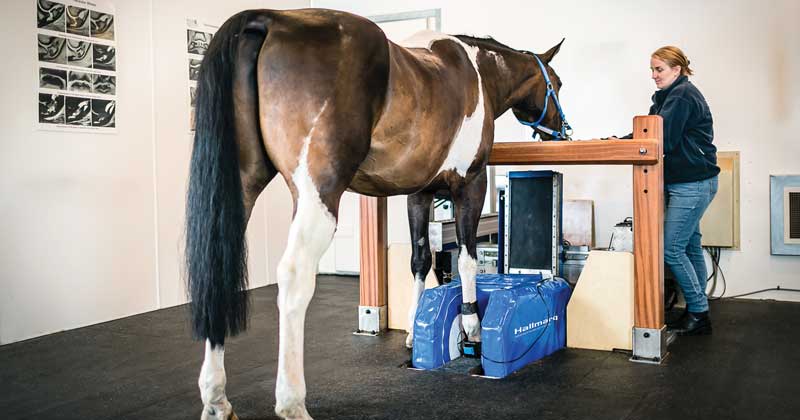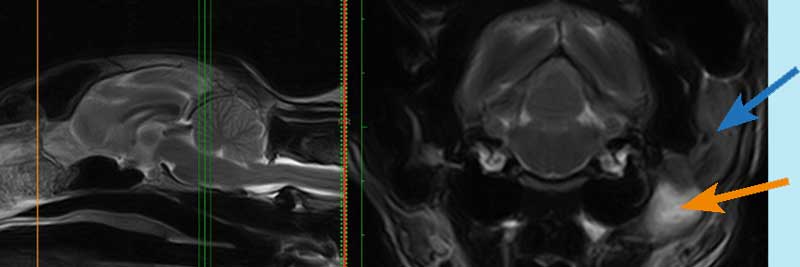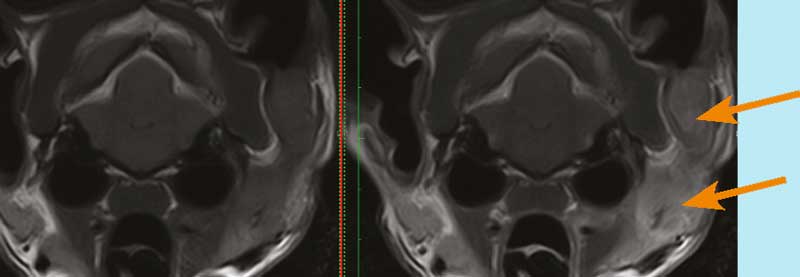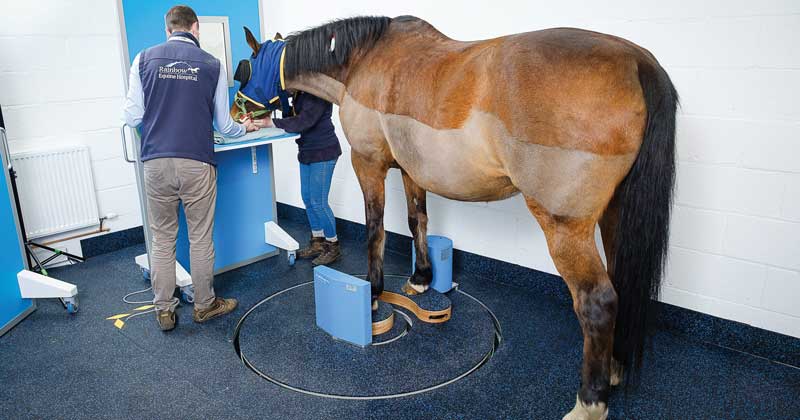13 May 2021
In this VBJ Technology Insight feature, Hallmarq discusses improving access to the benefits of advanced imaging.

Veterinary MRI and CT services are often thought to be “out of reach” for many practices.
Traditionally, these modalities require a major upfront investment of time, money, and resources, as well as a large footprint for safe installation. In addition, these challenges have created barriers to offering advanced imaging services at many veterinary hospitals.
However, veterinary-specific designs, innovative business models and world-class support programmes are bringing advanced imaging within reach for veterinary practices around the world. Whether practices are imaging large animals, such as horses, or the neighbourhood dogs and cats, MRI and CT provide a complete picture to support an accurate diagnosis and the basis for a solid treatment plan.
The goal is always to provide the highest standard of patient care; accurate diagnosis leads to efficient and effective treatment, and MRI and CT give a complete picture of the issue at hand. Confirmation of diagnosis not only offers peace of mind to the client, but also supports treatment choices and decisions – leading to better patient outcomes.
For example, in the case of a dog presenting with persistent neck pain, a common clinical scenario, multiple causes are possible. In some, a conservative medical approach may be successful, regardless of knowing the specific underlying disease.
However, if unsuccessful, the veterinarian can be faced with the frustration of having to make educated guesses and time may be of the essence when dealing with a disease that could be affecting the spinal cord. MRI can identify many of the causes, such as disc disease or a vertebral infection and accurately locate them providing a specific treatment and potentially guiding the surgeon to achieve a successful surgical cure.

It is well documented that better diagnosis leads to better patient outcomes. An opportunity exists to use therapies that would not otherwise be suggested when veterinarians can use diagnostic imaging to guide their findings. This definitive diagnosis allows for more effective and targeted treatment plans, eventually resulting in happier, healthier patients and often saving pet owners money in the long run.
For instance, seizures, a common brain disease in both cats and dogs, need both anticonvulsant therapy and sometimes a specific treatment for the underlying cause. Without knowledge of the underlying cause, for example, encephalitis or a brain inflammation, the seizures will not be effectively managed, and the patient could suffer unnecessarily, causing trauma to both pet and owner.
A nine-year-old domestic shorthair cat presented for a four-week history of head shaking and left ear irritation with an odorous aural discharge noted by the owner over the three days prior to presentation.
The cat was generally healthy, but was reluctant to be examined with an apparent increased sensitivity to touch over the left side of the head.
Ear examination required heavy sedation, but only confirmed the discharge and external ear canal stenosis due to soft tissue proliferation within the canal; a sample of the discharge was submitted for culture and antibiotic susceptibility testing.
An MRI evaluation of the cat’s head is pictured below.


A left-sided external ear canal mass can be seen extending toward the middle ear and into the para-aural tissues ventrally. The images confirmed the precise location of the disease and the preservation of middle and inner ear structures from involvement.
The images helped accurately guide the necessary resective surgery, which confirmed a squamous cell carcinoma with secondary infection. The information provided by the MR images ensured a more rapidly aggressive and targeted treatment, which potentially avoided the need for protracted unsuccessful medical therapy – and ultimately helped provide a definitive diagnosis.
Unique business models
Large up-front capital purchases are not an option for every practice. Unique business models – such as pay-as-you-go and capped monthly rates – offer the opportunity to provide advanced imaging services while reducing the operational risks associated with purchasing expensive capital equipment.
Flexible installation options
While a standard, in-hospital room may work for some sites, these rooms can be expensive and require a large footprint. Flexible installation options, such as a custom-built modular unit that can be installed directly next to the site, eliminate the need for a purpose-built room – and make up-front costs considerably less.
World-class support programmes
From initial enquiry through system installation and beyond, the right advanced imaging partner will offer unparalleled support from a team dedicated to the veterinary profession. This collaborative approach helps reduce financial risk and supports practice success from a clinical and financial standpoint.
Ease of use
With today’s innovative teleradiology technology, remote radiologists offer image reading for practices in various locations so that clinics do not need an on-site radiologist. In addition, easy-to-use software means that the systems can be operated by technicians so allowing busy vets to focus on other demands and responsibilities.

Positioning as a referral centre
Offering a trusted MRI or CT referral service for nearby practices is an ideal way to strengthen relationships with referring vets, enabling them to provide more comprehensive care for their client base. Additionally, strong referral relationships help grow your MRI and CT service, in return increasing profits. Advanced imaging services offer an entirely new revenue stream.
Achieving profitability
A low break-even number of cases makes achieving profitability easy for most clinics with an average caseload. Offering an MRI or CT service has been shown to generate additional revenue from treatment administered subsequent to accurate diagnosis. Offering advanced imaging elevates the professional profile of the clinic, resulting in an increased overall caseload and exponential growth.
Conclusion
In the past, upfront costs, extensive installations, lack of support, pressure on staff and the need for an extensive in-hospital footprint have all prevented practices from offering advanced veterinary imaging such as CT and MRI. Today, new technologies, flexible installation options and strong customer support programmes are making MRI and CT accessible to even more practices.
Every vet strives to provide the most effective solution for clients, along with the highest standard of care. Hallmarq Advanced Veterinary Imaging is breaking the barriers to accurate diagnosis. Its affordable and accessible advanced imaging options result in better patient outcomes, happier clients, and a more profitable business. With Hallmarq, advanced veterinary imaging is within your reach.
Contact hallmarq today on 01483 877812
Visit www.hallmarq.net/contact-us